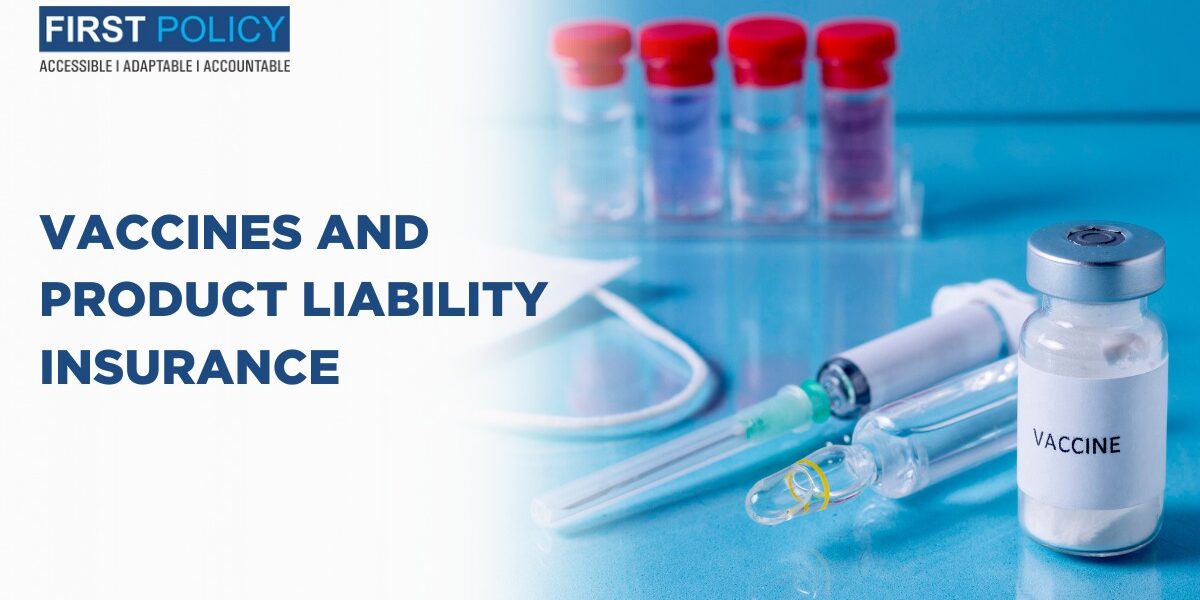
Vaccines and product liability insurance
One of the largest multinational corporations in the world has been in the news lately. They are facing a 100-million-pound lawsuit in the UK over claims that their COVID-19 vaccines caused deaths and injuries to several people. They admitted in one of the court documents in February 2024 that the vaccine can “in very rare cases, cause TTS or Thrombosis with Thrombocytopenia Syndrome”.
This development was followed by the news that the manufacturer (hereinafter referred to as Licensor) has initiated a global withdrawal of its COVID-19 vaccine. As per the company, they voluntarily withdrew its âmarketing authorizationâ in the European Union, adding that the vaccine was no longer being produced and could no longer be used. Similar withdrawals will be made across other countries that have been using the vaccine.
In India also, there has been a suit filed against the local manufacturer (hereinafter referred to as Licensee) who produced and distributed the vaccine under license. The parents of a woman who reportedly died after taking the covid vaccine shot have decided to sue the vaccine maker(s).
Further it is reported in press that the basic vaccine was designed by a university.
This discussion below proceeds on the basis that there is no manufacturing fault and looks at issues from the angle of manufacturer.
A few questions arise in connection with product liability insurance:
- Whether Liability should fall on designer or manufacturer?
- Does Liability at all attaches to manufacturers if side effects were not known to anyone at the time of administration of Vaccine?
- Will the policy respond when some side effects were known and advertised?
- Does the Licensee need to give notice of circumstance of claim based on Licensorâs admission in Court? Is Insurance company duty bound to accept same?
Should the liability be on designer or manufacturer?
In case of no fault in manufacturing (which will include packing materials and safety instructions) an issue arises that who should be liable whether the designer of product or the manufacturer. While general understanding would demand that the claim should fall at the party which is at fault in this case designer, position is changed due to factors like contractual arrangement between parties (manufacturer might agree to indemnify designer/ inventor or designer / inventor gives initial formula on as Is where is base, deep pocket theory, change in product from initial invention or courts could consider affixing liabilities on all parties in chain on joint and several basis or any other factor specific to facts of case.
Does Liability at all attaches to manufacturers even if side effects were not known to anyone upto time of administration of vaccine?
To put this issue in perspective, the Covid 19 vaccines were developed under peculiar circumstances. The world was reeling under the onslaught of Covid 19 with no known or effective cure. A vaccine was thought to be the only way to fight our way out of the disease.
Any normal vaccine (or drug) development goes through several phases of clinical trials involving animals and humans. This process usually takes years to complete. However, considering the dire situation facing mankind, the development process was accelerated, and vaccines were rolled out in record time.
In many jurisdictions, manufacturer is not liable for harm caused by a vaccine due to its inherent or unavoidable dangerousness, that is otherwise not defective in any manner. If a vaccine causes harmful side effects in some portion of the recipient population, the manufacturer of the vaccine is not liable for those side effects. If vaccine makers are held liable for side effects in each and every case of side effect, then it will act as a deterrent to vaccine making and such situation wonât be in public interest.
For every vaccine or medicine, there can be side effects. So, taking a vaccine is often a cost benefit question. The benefit of taking a vaccine must outweigh the costs.
Will the policy respond to such claims when some side effects were known and advertised?
A liability suit may not succeed if the side effects were clearly advertised and known to the patient. Also, a typical product liability policy excludes expected or intended injuries arising from product consumption. However, the manufacturer will have to defend the suit and defense costs will be payable.
What if Manufacturer knowingly rolled out the product and suppressed the issues of potential injuries?
In case of suppression, while the manufacturer will be held responsible in law (could face penalties as well), the insurers are likely to decline same as the losses are due to willful actions of insured.
Does accelerated clinical trials and potential error in discovering any flaw in vaccine design give rise to liability?
The clinical trials are done under the instructions of government authorities and approval for manufacturing is granted only after such trials. Â In the absence of any allegation for suppression or falsification of clinical studies data, government approval is final evidence that entire process for clinical trial was completed.
What if manufacturer put the warning of side effects adequately but the hospital did not mention same to people while administering vaccine?
In this case, while the manufacturer would have the defense that it did everything which was expected of him, the hospital or administering body will have to answer.
Another issue is that in India many a times vaccines were administered from temporary premises, and it would be very difficult for plaintiff to know the personnel/organizations who were in charge of same.
Does the licensee need to give notice of circumstance of claim based on the Licensorâs admission in court?
Many product liability policies are issued on claim made basis (position wonât change materially even for occurrence form policies) and often carry a clause for â âNotice of circumstances of Claimâ which require the insured to give notice in writing to the Underwriters of any circumstances or Occurrences which may give rise to a Claim and provide all information and documents available to the Insured.
The word âcircumstanceâ is not defined in policy and is therefore subjective. However, it is a beneficial provision for Insured and the insured has an obligation to notify circumstance and it Is right of insurers to whether accept intimation as circumstance.
In the case of Licensee if they have no information about people who could be carrying similar body traits as the people in the Licensorâs case and when no claim is brought forward by anyone, then issue arises, if Licensorâs admission, is sufficient for the Licensee to call it circumstance in own case.
There are many elements to above definition and same have been litigated in foreign jurisdictions. The same can be used as guideline to determine applicability of same and process to notify same.
Conclusion:
Several complex legal and procedural issues are involved in this issue. They need to be carefully considered by the Insureds and their advisors while defending the suit and handling the insurance claim arising therefrom. The terms and conditions of the policy wordings used will play a critical role in determining respective rights and liabilities.




